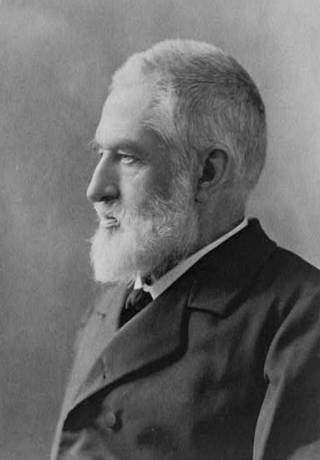
The Battle of Chancellorsville was raging on that morning in early May of 1863 when Jed Hotchkiss, Stonewall Jackson's topographer, entered the following in his diary:
May 2…I went down to Mr. Welford's where General Stuart had his quarters, and ascertained the roads that led around to the enemy's rear and came back and reported to Generals Lee and Jackson who consulted and examined the map…
The great Stonewall turned to Hotchkiss and questioned him at length. In his usual quiet and careful manner, Hotchkiss, the nation's best topographer, gave the nation's best field general directions on how to get to the enemy's left flank undetected.
The rest is history. Joe Hooker's Yankee soldiers were busy cooking supper at 5 p.m. when the first of 15,000 rebels stormed across their camp. The rout that followed became the Confederate Army's greatest victory, and Chancellorsville is generally considered to be its high water mark.
The topographer who mapped Stonewall's route to victory was a former Yankee schoolmaster who had adopted Augusta County as his home just prior to the Civil War.
Jedediah Hotchkiss' place in Pittsylvania County history is an interesting and surprising one. In his diary, long considered to be the most important document in Confederate history records, he records on April 10, 1865, that he was in Pittsylvania County Court House [Chatham] when he received word that Lee had surrendered. Hotchkiss was on his way to Danville to join Lee at the time, and he further records that he camped for the night at a point nine miles south of present-day Chatham.
Since there was nothing left to do but go home, Jed Hotchkiss crossed the Staunton River at Anthony's Ford (near the present site of Vista Pointe on Smith Mountain Lake) and trudged homeward to Augusta County.
After the war, Hotchkiss became a “one man chamber of commerce,” promoting West Virginia and Virginia far and wide. He published a quarterly titled The Virginias, a Mining, Industrial and Scientific Journal “devoted to the development of Virginia and West Virginia.” The publication carried production records of western Virginia's and West Virginia's factories, mines and farms.
From census figures it told its readers how the counties ranked in production of leather during the 1880's. The Virginias also noted, of course, that Pittsylvania continued to lead in the production of tobacco.
Hotchkiss promoted the beeswax industry in Virginia and credited Pittsylvania County as number one in its production during most of the 19th century.
Jed Hotchkiss became one of the South's most respected scientists as his fame became widespread. A signal honor came his way when he was commissioned to exhibit specimens of Virginia's mineral deposits at the New Orleans World's Fair in 1885. Perhaps Jed Hotchkiss noticed the abundance of ore-bearing stones on his route from present-day Chatham, via Pittsville, to Anthony's Ford during his sorrowful ride home after Appomattox.
Of the 96 ore samples from Virginia displayed at the New Orleans exposition, there were six, a disproportionately large number, from Pittsylvania County.
Fortunately for posterity, Jed Hotchkiss was a gracious gentleman who dutifully published the name of the donor and location from which each sample was taken. Some of these may be of interest to Packet readers who could be descendants of the donors.
Hotchkiss credited a Mr. E. D. Frazier, an employee of the Department of Agriculture, with assistance in collecting the samples.
Yes, Pittsylvania County's minerals were much in evidence at the New Orleans World's Fair thanks to its connection to Stonewall Jackson's “eyes” and scientist extraordinary, Jed Hotchkiss.
Herman Melton's online articles are posted by Mitchells Publications and the Sims-Mitchell House as part of an effort to document Pittsylvania County, Chatham, and Danville, Virginia.
Copyright © 1992 Herman E. Melton.